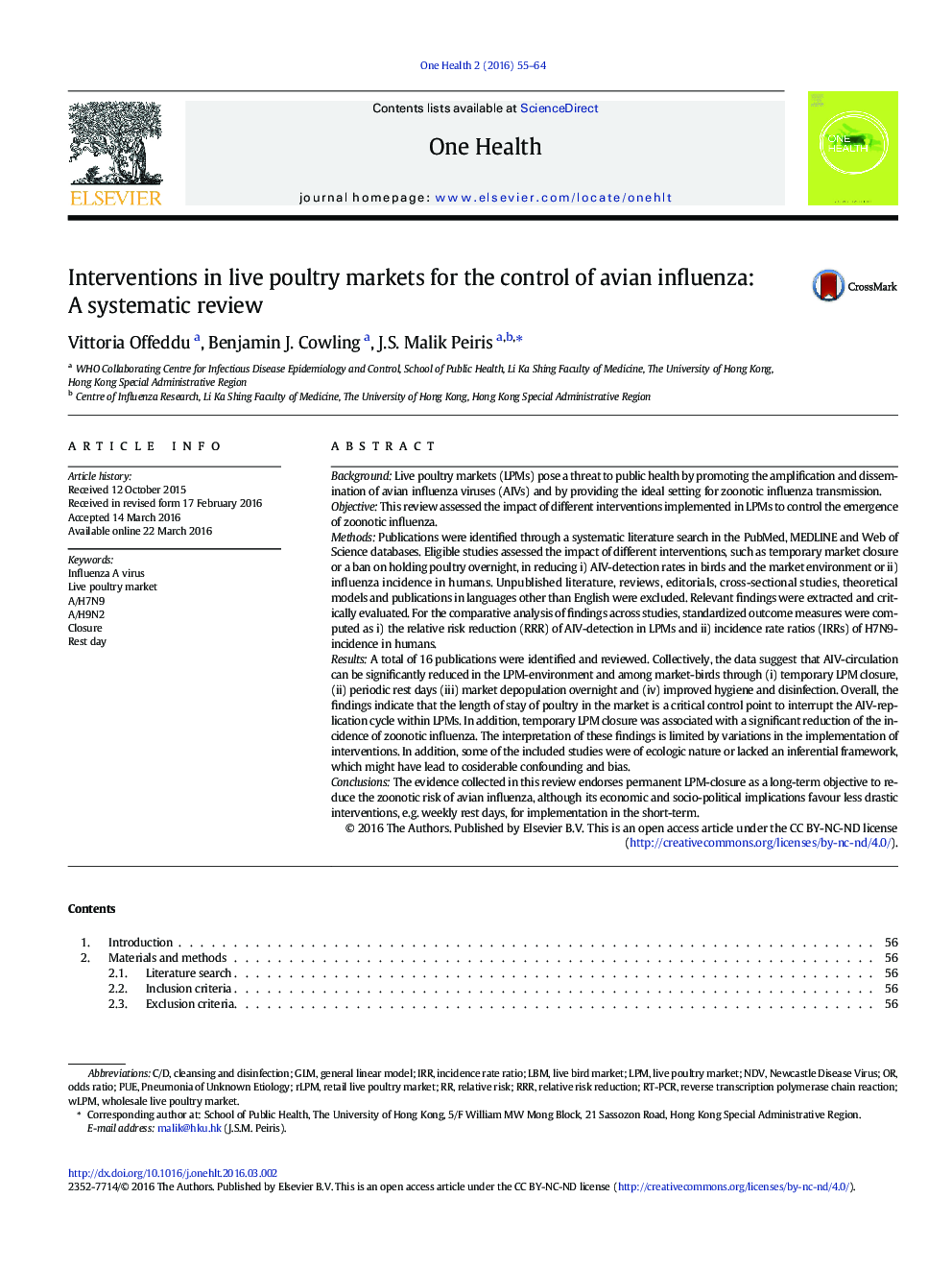| Article ID | Journal | Published Year | Pages | File Type |
|---|---|---|---|---|
| 4360787 | One Health | 2016 | 10 Pages |
•Avian influenza viruses (AIVs) can infect humans. Bird-to-human transmission is particularly intense in live poultry markets.•Periodic rest days, overnight depopulation or sale bans of certain species significantly reduce AIV-circulation in the markets.•Market closure would lastingly reduce the risk of animal and human infection.
BackgroundLive poultry markets (LPMs) pose a threat to public health by promoting the amplification and dissemination of avian influenza viruses (AIVs) and by providing the ideal setting for zoonotic influenza transmission.ObjectiveThis review assessed the impact of different interventions implemented in LPMs to control the emergence of zoonotic influenza.MethodsPublications were identified through a systematic literature search in the PubMed, MEDLINE and Web of Science databases. Eligible studies assessed the impact of different interventions, such as temporary market closure or a ban on holding poultry overnight, in reducing i) AIV-detection rates in birds and the market environment or ii) influenza incidence in humans. Unpublished literature, reviews, editorials, cross-sectional studies, theoretical models and publications in languages other than English were excluded. Relevant findings were extracted and critically evaluated. For the comparative analysis of findings across studies, standardized outcome measures were computed as i) the relative risk reduction (RRR) of AIV-detection in LPMs and ii) incidence rate ratios (IRRs) of H7N9-incidence in humans.ResultsA total of 16 publications were identified and reviewed. Collectively, the data suggest that AIV-circulation can be significantly reduced in the LPM-environment and among market-birds through (i) temporary LPM closure, (ii) periodic rest days (iii) market depopulation overnight and (iv) improved hygiene and disinfection. Overall, the findings indicate that the length of stay of poultry in the market is a critical control point to interrupt the AIV-replication cycle within LPMs. In addition, temporary LPM closure was associated with a significant reduction of the incidence of zoonotic influenza. The interpretation of these findings is limited by variations in the implementation of interventions. In addition, some of the included studies were of ecologic nature or lacked an inferential framework, which might have lead to cosiderable confounding and bias.ConclusionsThe evidence collected in this review endorses permanent LPM-closure as a long-term objective to reduce the zoonotic risk of avian influenza, although its economic and socio-political implications favour less drastic interventions, e.g. weekly rest days, for implementation in the short-term.
